House of York facts for kids
Quick facts for kids House of York |
|
|---|---|
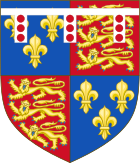 As descendants of King Edward III in the male line, the first three Dukes of York bore the arms of that King (adjusted for France modern) differenced by a label of three points argent each bearing three torteaux gules. The 4th Duke, later King Edward IV, abandoned his paternal arms in favour of new arms emphasising his descent via female lines from the royal line of Clarence/de Burgh/Mortimer, senior to that of the House of Lancaster |
|
| Parent house | House of Plantagenet |
| Country |
|
| Founded | 1385; 639 years ago |
| Founder | Edmund of Langley |
| Current head | Extinct |
| Final ruler | Richard III of England |
| Titles |
|
| Dissolution | 1499 |
| Deposition | 1485 |
The House of York was a powerful family in England during the 1400s. It was a branch of the royal House of Plantagenet. Three members of this family became kings of England in the late 15th century.
The House of York began with Edmund of Langley, 1st Duke of York. He was the fourth son of King Edward III. Over time, the York family also gained a strong claim to the throne through marriage. This was because an heir of York married a descendant of Lionel, Duke of Clarence, who was Edward III's second son. This made the Yorks believe they had a better right to be king than their rivals, the House of Lancaster.
The time when the York family ruled ended when Richard III of England died in battle in 1485. The male line of the family ended completely in 1499.
Contents
How the Yorks Descended from Edward III
Edmund of Langley, 1st Duke of York was the fourth son of King Edward III. He was made the first Duke of York in 1385. Edmund married Isabella of Castile, Duchess of York. They had two sons: Edward and Richard of Conisburgh.
Richard of Conisburgh married Anne Mortimer. Anne was a great-great-granddaughter of King Edward III through his second son, Lionel. This connection through Anne Mortimer gave the York family their main claim to the throne.
After Edmund of Langley died in 1402, his son Edward became the Duke of York. Edward died in battle in 1415. His brother Richard of Conisburgh had been put to death earlier that year. So, the title of Duke of York went to Richard's son, Richard of York, 3rd Duke of York.
Richard of York had a very strong claim to the throne. He was related to King Edward III through both his mother and his father. He was the first to use the name Plantagenet in 1448. Richard became one of the richest and most powerful nobles in England. He married Cecily Neville. They had many children, including:
- Anne of York (1439–1476)
- Edward (1442–1483)
- Edmund (1443–1460)
- Elizabeth (1444–1503)
- Margaret (1446–1503)
- George (1449–1478)
- Richard (1452–1485)
The Wars of the Roses
Richard Plantagenet, the Duke of York, was a very important person. However, the advisors of the weak King Henry VI did not give him a place in government. This made Richard unhappy.
The Wars of the Roses began in 1455. This was a series of battles between the House of York (who used a white rose as their symbol) and the House of Lancaster (who used a red rose). At first, Richard only wanted to remove his rivals from power. But in 1460, he claimed the throne for the House of York.
The Yorkists captured King Henry VI in 1460. However, Richard and his son Edmund were killed at the Battle of Wakefield on December 30, 1460.
Richard's son Edward then took over the claim to the throne. With help from a powerful noble called Richard Neville, 16th Earl of Warwick (known as "The Kingmaker"), Edward won many battles against the Lancastrians. Edward was declared king in London in 1461. He made his claim even stronger with a big victory at the Battle of Towton that same year.
Yorkist Kings of England
Edward IV's Reign
Edward IV's early rule was difficult. There were many plots and uprisings by the Lancastrians who wanted Henry VI back on the throne. Even Warwick, the "Kingmaker," changed sides. He helped Henry VI become king again for a short time in 1470–71.
But Edward fought back and won his throne again. The House of Lancaster ended when Henry VI died in the Tower of London in 1471. In 1478, Edward's brother George, Duke of Clarence, caused more trouble. He was put to death in the Tower of London.
Edward V and Richard III
When Edward IV died in 1483, his twelve-year-old son Edward V became king. Edward IV's younger brother, Richard, Duke of Gloucester, was made Protector. The young King Edward V and his younger brother Richard were taken to the Tower of London. What happened to these "Princes in the Tower" is still a mystery today. No one knows if they were killed or who might have done it.
Parliament then said that Edward IV's marriage was not valid. This meant his sons were not legitimate heirs. So, Richard was declared the rightful king. He was crowned Richard III in July 1483.
The End of the House of York
Some people who supported Edward IV were against Richard III. This divided the Yorkist power. In 1485, Richard III met Henry Tudor in battle at the Battle of Bosworth Field. Henry Tudor was a distant relative of the House of Lancaster.
During the battle, some of Richard's supporters switched sides. Richard III was killed in the fight. He was the last Plantagenet king and the last English king to die in battle.
Henry Tudor declared himself king. He married Elizabeth of York, who was Edward IV's oldest daughter. By doing this, he claimed to unite the Houses of York and Lancaster. Henry Tudor became King Henry VII and started the Tudor dynasty, which ruled until 1603.
Later Claimants
Even after Henry VII became king, some members of the York family tried to get the throne back. Margaret of York, Edward IV's sister, and members of the de la Pole family (children of Edward's sister Elizabeth) continued to try and restore a Yorkist king.
Edward Plantagenet, 17th Earl of Warwick, the son of Edward IV's brother George, was held in the Tower of London. In 1487, Margaret helped a rebellion led by Lambert Simnel, who pretended to be Warwick. This rebellion failed. Later, Warwick was involved in other attempts to take the throne. He was put to death in 1499. With his death, the main male lines of both the Plantagenet and York families ended.
Family tree
| House of York family tree | ||||||||||||||||||||||||||||||||||||||||||||||||||||||||||||||||||||||||||||||||||||||||||||||||||||||||||||||||||||||||||||||||||||||||||||||||||||||||||||||||||||||||||||||||||||||||||||||||||||||||||||||||||||||||||||||||||||||||||||||||||||||||||||||||||||||||||||||||||||||||||||||||||||||||||||||||||||||||||||||||||||||||||||||||||||||||||||||||||||||||||||||||||||||||||||||||||||||||||||||||||||||||||||||||||||||||||||||||||||||||||||||||||||||||||||||||||||||||||||||||||||||||||||||||||||||||||||||||||||||||||||||||||||||||||||||||||||||||||||||||||||||||||||||||||||||||||||||||||||||||||||||||||||||||||||||||||||||||||||||||||||||||||||||||||||||||||||||||||||||||||||||||||||||||||||||||||||||||||||||||||||||||||||||||||||||||||||||||||||||||||||||||||||||||||||||||||||||||||||||||||||||||||||||||||||||||||||||||||||||||||||||||||||||||||||||||||||||||||||||||||||||||||||||||||||
|---|---|---|---|---|---|---|---|---|---|---|---|---|---|---|---|---|---|---|---|---|---|---|---|---|---|---|---|---|---|---|---|---|---|---|---|---|---|---|---|---|---|---|---|---|---|---|---|---|---|---|---|---|---|---|---|---|---|---|---|---|---|---|---|---|---|---|---|---|---|---|---|---|---|---|---|---|---|---|---|---|---|---|---|---|---|---|---|---|---|---|---|---|---|---|---|---|---|---|---|---|---|---|---|---|---|---|---|---|---|---|---|---|---|---|---|---|---|---|---|---|---|---|---|---|---|---|---|---|---|---|---|---|---|---|---|---|---|---|---|---|---|---|---|---|---|---|---|---|---|---|---|---|---|---|---|---|---|---|---|---|---|---|---|---|---|---|---|---|---|---|---|---|---|---|---|---|---|---|---|---|---|---|---|---|---|---|---|---|---|---|---|---|---|---|---|---|---|---|---|---|---|---|---|---|---|---|---|---|---|---|---|---|---|---|---|---|---|---|---|---|---|---|---|---|---|---|---|---|---|---|---|---|---|---|---|---|---|---|---|---|---|---|---|---|---|---|---|---|---|---|---|---|---|---|---|---|---|---|---|---|---|---|---|---|---|---|---|---|---|---|---|---|---|---|---|---|---|---|---|---|---|---|---|---|---|---|---|---|---|---|---|---|---|---|---|---|---|---|---|---|---|---|---|---|---|---|---|---|---|---|---|---|---|---|---|---|---|---|---|---|---|---|---|---|---|---|---|---|---|---|---|---|---|---|---|---|---|---|---|---|---|---|---|---|---|---|---|---|---|---|---|---|---|---|---|---|---|---|---|---|---|---|---|---|---|---|---|---|---|---|---|---|---|---|---|---|---|---|---|---|---|---|---|---|---|---|---|---|---|---|---|---|---|---|---|---|---|---|---|---|---|---|---|---|---|---|---|---|---|---|---|---|---|---|---|---|---|---|---|---|---|---|---|---|---|---|---|---|---|---|---|---|---|---|---|---|---|---|---|---|---|---|---|---|---|---|---|---|---|---|---|---|---|---|---|---|---|---|---|---|---|---|---|---|---|---|---|---|---|---|---|---|---|---|---|---|---|---|---|---|---|---|---|---|---|---|---|---|---|---|---|---|---|---|---|---|---|---|---|---|---|---|---|---|---|---|---|---|---|---|---|---|---|---|---|---|---|---|---|---|---|---|---|---|---|---|---|---|---|---|---|---|---|---|---|---|---|---|---|---|---|---|---|---|---|---|---|---|---|---|---|---|---|---|---|---|---|---|---|---|---|---|---|---|---|---|---|---|---|---|---|---|---|---|---|---|---|---|---|---|---|---|---|---|---|---|---|---|---|---|---|---|---|---|---|---|---|---|---|---|---|---|---|---|---|---|---|---|---|---|---|---|---|---|---|---|---|---|---|---|---|---|---|---|---|---|---|---|---|---|---|---|---|---|---|---|---|---|---|---|---|---|---|---|---|---|---|---|---|---|---|---|---|---|---|---|---|---|---|---|---|---|---|---|---|---|---|---|---|---|---|---|---|---|---|---|---|---|---|---|---|---|---|---|---|---|---|---|---|---|---|---|---|---|---|---|---|---|---|---|---|---|---|---|---|---|---|---|---|---|---|---|---|---|---|---|---|---|---|---|---|---|---|---|---|---|---|---|---|---|---|---|---|---|---|---|---|---|---|---|---|---|---|---|---|---|---|---|---|---|---|---|---|---|---|---|---|---|---|---|---|---|---|---|---|---|---|---|---|---|---|---|---|---|---|---|---|---|---|---|---|---|---|---|---|---|---|---|---|---|---|---|---|---|---|---|---|---|---|---|---|---|---|---|---|---|---|---|---|---|---|---|---|---|---|---|---|---|---|---|---|---|---|---|---|---|---|---|---|---|---|---|---|---|---|---|---|---|---|---|---|---|---|---|---|---|---|---|---|---|---|---|---|---|---|---|---|---|---|---|---|---|---|---|---|---|---|---|---|---|---|---|---|---|---|---|---|---|---|---|---|---|---|---|---|---|---|---|---|---|---|---|---|---|---|---|---|---|---|---|
|
||||||||||||||||||||||||||||||||||||||||||||||||||||||||||||||||||||||||||||||||||||||||||||||||||||||||||||||||||||||||||||||||||||||||||||||||||||||||||||||||||||||||||||||||||||||||||||||||||||||||||||||||||||||||||||||||||||||||||||||||||||||||||||||||||||||||||||||||||||||||||||||||||||||||||||||||||||||||||||||||||||||||||||||||||||||||||||||||||||||||||||||||||||||||||||||||||||||||||||||||||||||||||||||||||||||||||||||||||||||||||||||||||||||||||||||||||||||||||||||||||||||||||||||||||||||||||||||||||||||||||||||||||||||||||||||||||||||||||||||||||||||||||||||||||||||||||||||||||||||||||||||||||||||||||||||||||||||||||||||||||||||||||||||||||||||||||||||||||||||||||||||||||||||||||||||||||||||||||||||||||||||||||||||||||||||||||||||||||||||||||||||||||||||||||||||||||||||||||||||||||||||||||||||||||||||||||||||||||||||||||||||||||||||||||||||||||||||||||||||||||||||||||||||||||||
Dukes of York
| Duke | Portrait | Birth | Marriages | Death |
|---|---|---|---|---|
| Edmund of Langley (Founder of the House of York) 1385–1402 |
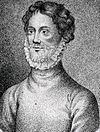 |
Born 1341, son of King Edward III. | Married Isabella of Castile (3 children) and Joan Holland (no children). | Died 1402. |
| Edward of Norwich 1402–1415 |
 |
Born 1373, son of Edmund of Langley. | Married Philippa de Mohun (no children). | Died in battle in 1415. |
| Richard Plantagenet 1415–1460 |
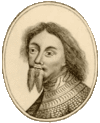 |
Born 1411, son of Richard of Conisburgh. | Married Cecily Neville (12 children). | Died in battle in 1460. |
| Edward Plantagenet 1460–1461 |
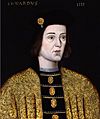 |
Born 1442, son of Richard Plantagenet. | Married Elizabeth Woodville (10 children). | Died 1483. |
Edward Plantagenet became Edward IV in 1461. This meant the title of Duke of York was joined with the crown.
Yorkist Kings of England
| Name | Portrait | Birth | Marriages | Death |
|---|---|---|---|---|
| Edward IV 1461–1470 1471–1483 |
 |
Born 1442, son of Richard Plantagenet. | Married Elizabeth Woodville (10 children). | Died 1483. |
| Edward V 1483 |
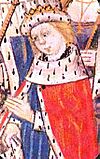 |
Born 1470, son of Edward IV. | Never married. | Died around 1483 (presumed murdered). |
| Richard III 1483–1485 |
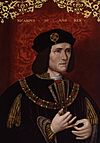 |
Born 1452, son of Richard Plantagenet. | Married Anne Neville (1 son). | Died in battle in 1485. |
See also
 In Spanish: Casa de York para niños
In Spanish: Casa de York para niños


